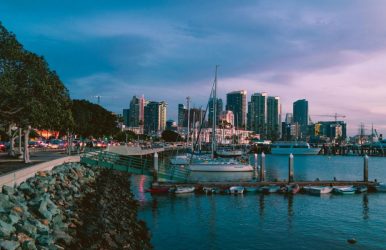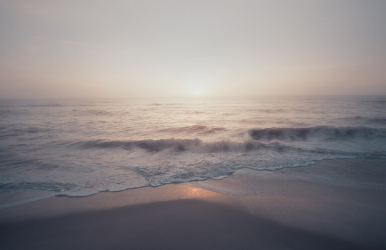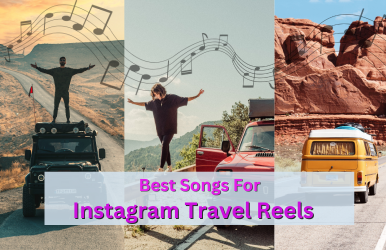Luxury on Arrival: How Private Ski Transfers Upgrade the First Hours of Your Holiday
BY Sibashree Oct 1, 2025
There's no denying that the initial hours of a ski holiday are amongst the most crucial. It's when you establish the atmosphere from a place of relaxation and excitement or frantic fatigue before even getting settled. These essentials are especially true for those who have booked luxury chalets, gourmet meals, and exquisite skiing options, so why should the arrival be any different in convenience, luxury, and comfort? A private ski transfer ensures the experience is already in line with the rest of the holiday. The alternative, skip the private option and check into a shared bus with strangers on an a la carte schedule, fails to address the expectation of exclusivity with an inconsistent approach at the very start. Private ski transfers offer door-to-door luxury that transforms your holiday before it begins. The Importance Of First Impressions When You Go On Ski Holidays The transfer to your resort is the first real holiday experience. It's memorable and sets a tone. Suppose a crowded airport is followed by long waits, cramped airline seats, and a need to drag equipment through the snow-laden streets to get to the hotel. These things can cause frustration and ruin your holiday mood. If children are annoyed, parents will be annoyed; if it's a couple's getaway or celebratory group gathering, such frustrations don't match the level of expected holiday enjoyment. A private transfer sets the first impression up for success. A driver awaits you right off the plane, leading you directly to your hotel. Alps2Alps specializes in providing this seamless experience, ensuring travelers enjoy reliability and comfort from the very beginning. There are no worries about missing shuttles, no concerns for finding transfer options, and no dragging luggage through town. Instead, the vacation starts as soon as you touch down in the snow, with comfort and exclusivity greeting you during those first few hours. Comfort Is Key When It Comes To Private Ski Transfers One of the immediate benefits of private ski transfers is comfort. There is space. There are legitimate vehicles that accommodate a certain number of passengers while ensuring plenty of room for bulky luggage and huge skis and snowboards. Instead of being crammed in a shuttle with ten other strangers on their journeys, you and your party can spread out, feel comfortable, and enjoy the experience. No one needs to worry about being quiet or overly excited, as there's privacy to choose how you want to feel. Parents can feel comfortable managing their children without feeling stressed in a close quarters situation. Couples can find quiet time to ease into their holiday. Groups can celebrate en route as though the transfer is part of the celebratory experience. Time Saving And Departing When You're Ready Ski holidays tend to be short, and time is the most valuable resource available. Shared transfers mean people have to wait around for others to arrive, which can delay departure by an hour. Once on the road, multiple stops add more driving time. For those looking to maximize every minute of lift-pass validity, this is time that could be lost but never regained. Private transfers circumvent such time loss. The driver is there when the client is ready to go. They track flight arrivals and departures to ensure on-time or early departure. The drive itself is direct, with no other passengers or stops along the way. In fact, it's often possible to arrive early enough to unpack, grab gear, and enjoy the slopes on the same day of arrival. For many travelers, this time is just as precious as the comfort of a private transfer. Professionalism As Part Of The Luxury Experience Luxury isn't just in the vehicle; it's in the experience. At the same time, there are high-end sedans and SUVs reserved for private transfers. Moreover, the professionalism behind the wheel aids in creating a luxurious journey. Private transfer drivers are licensed and trained professionals who offer courtesy and skilled driving on alpine roads. Whether snowing, raining, or bright blue skies, private transfer drivers ensure passenger safety and comfort, handling luggage like fragile treasures. Some amenities are more than just expected. Some providers offer bottled water or Wi-Fi in their cars. Others allow for stops along the route to grab food or groceries before heading to the accommodation. The ski holiday experience is fluid even before arriving at the final destination. Thus, private transfers become part of the ski holiday instead of a mere mode of transportation. Arrival Expectations Matched With Private Transfers For many travelers heading to luxe chalets or bespoke hotels, the quality arrival experience should match that of the accommodations. Arriving at a bus stop or wrestling bags through snowy streets doesn't equate to high-end hotel or chalet accommodations. However, a private transfer delivers travelers directly to the doors of their accommodations, matching expected quality with reality. This matters for cohesion's sake; if one spends thousands on a luxury experience, the potential anticipation when entering a resort should match any restaurant visit; fine dining begins before even tasting the cuisine, with comfort in seating arrival. Similarly, luxurious ski holidays require this seamless arrival from private transfers that complement luxury accommodation and high-end resort offerings. Start Off Fresh Despite Fatiguing Travel Conditions Whether it's a long flight, an early morning, or a congested airport, travel fatigue sets in before one ever arrives on holiday. When travel takes away energy from the first day, enjoyment is lower, and performance on the slopes can be impacted. Thus, shared transfers only add to travel fatigue with waiting and unnecessary drop-off stops. A private transfer fosters just the opposite. With personal direction and a direct stop in between, a private transfer helps people relax, recharge, and get into the skiing spirit without worry or hassle. Comfortable seats in a quiet atmosphere help one rest and prepare; arriving at a destination invigorated instead of having to drive late from fatigue helps honor the first few hours of the holiday instead of draining them. Great For Families And Special Occasions Any family knows that a shared transfer doesn't work with children. Whether one has infants or toddlers who need to stretch out, or whether older children have particular moods that come with certain travel situations, a private transfer works seamlessly. Families can choose the time they leave, make bathroom breaks on the way (and not at horrendous pit stops), and have an atmosphere of privacy that allows them to ease into the trip without hassle. When everyone is happy after arrival, moms and dads are less stressed, and kids are more excited once they get off the slopes. Shared private transfers are also perfect for couples and groups celebrating honeymoons, anniversaries, or milestone birthdays, where everyone needs to transfer at once. When an experience is sought for its exclusivity from the start, a private transfer completes the experience by rendering the professionalism, comfort, and ambiance needed during those first few hours of an otherwise fantastical holiday. For shared occasions, transfers aren't just practical; they're part of the experience. The Psychological Benefits Of An Easeful Mind One of the major concerns during ski travel is whether or not someone is waiting for you upon arrival. Each traveler should expect this from their transfer: someone patiently waiting for them with their name sign and luggage assistance without worrying about others' belongings or directions. An easy mind helps settle others into their holiday faster. Instead of worrying about when they'll leave the airport or if they're going in the correct direction, they can enjoy the first few hours of their holiday comfortably. Why The First Hours Of The Holiday Matter The Most The first few hours of any holiday mean more than people think; they set the mood, the tone, the energy, and even how guests reflect upon their trip post-vacation. While shared, budget-friendly transfers are a great means of transportation to save some money, the anxiety and holdups associated with multiple stops and additional passengers take away from this essential first impression. In contrast, private transfers not only render the service an experience, as they're quick, comfortable, and professional, but also create a consistent atmosphere throughout an otherwise transformed holiday. Essentially, every component should feel like part of the overall luxury holiday, and private transfers help with that perception. They are more than just a ride; they're part of a holiday. How The Transfer Affects Skiing On Day One The opportunity to ski on day one comes solely from the transfer experience; the sooner guests can get to their desired locations, the better chance they have to ski on day one. However, for those who book shared transfers, they find themselves stuck waiting for other flights to arrive and having to make additional stops along the way. This means that by the time they do arrive at their intended accommodation, retrieving ski equipment won't be possible, as it's too late. For those who spent money on multi-day lift tickets when they're instantly invalidated on day one, that's money and time wasted. Private transfers allow people to hit the ground running literally. Whether it's a quick drive or a longer journey, at least guests get to maximize their first day by getting to their accommodations earlier than intended, which also means they can pick up rental equipment shortly after arrival instead of before and get in a few runs to make the first day part of the holiday instead of just a travel day. The Luxury Symbolism Of A Seamless Arrival Luxury is all about symbolism, and nothing is more symbolic than an easy, enjoyable, and seamless transfer upon arrival. When guests step off their connecting flight, welcomed by their private driver and only theirs ready to assist them with luggage into a comfortable vehicle, rendering the one-on-one treatment right to their door, they realize that everything has already been covered for them. All they need to do is enjoy. Getting directly to a door, a private chalet, or a boutique hotel shows that this holiday means something special to them, even if it's just a few days away from home. Symbolism adds an extra layer of psychological comfort that everything they chose from the luxury accommodations to luxury services will match such quality, based on how easy it was to arrive. No longer is arrival merely a pit stop; it transforms into motivation for what's to come. Why Luxury Travelers Believe Transfers Are Part Of The Holiday Luxury travelers don't view private transfers as an added bonus. They see them as part of the holiday. If they're not going to settle for a mediocre chalet, sub-par ski guide, or below-average dining experience, then why should they settle for anything less than a top-of-the-line approach when it comes to their private transfer? Private Transfers Help You Relax Before Your Vacation Starts I cannot relax until I have settled into the hotel or chalet after a busy day of travel. Yet a private transfer makes it feel like you're starting your holiday before you even get to your destination. Why? Because it's all about comfort, and comfort equals relaxation. You can sit back and recline in cushioned seats instead of being cramped in an economy bus. Further, there will be a better sense of privacy. Private transfers also help travelers adjust their mindset from busyness to relaxation. Don’t wait in line for a shuttle bus or become frazzled. Sit back and enjoy the scenery of the mountains coming closer.






















